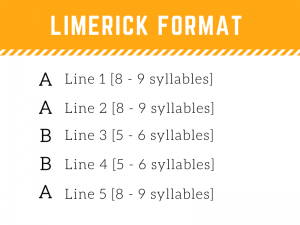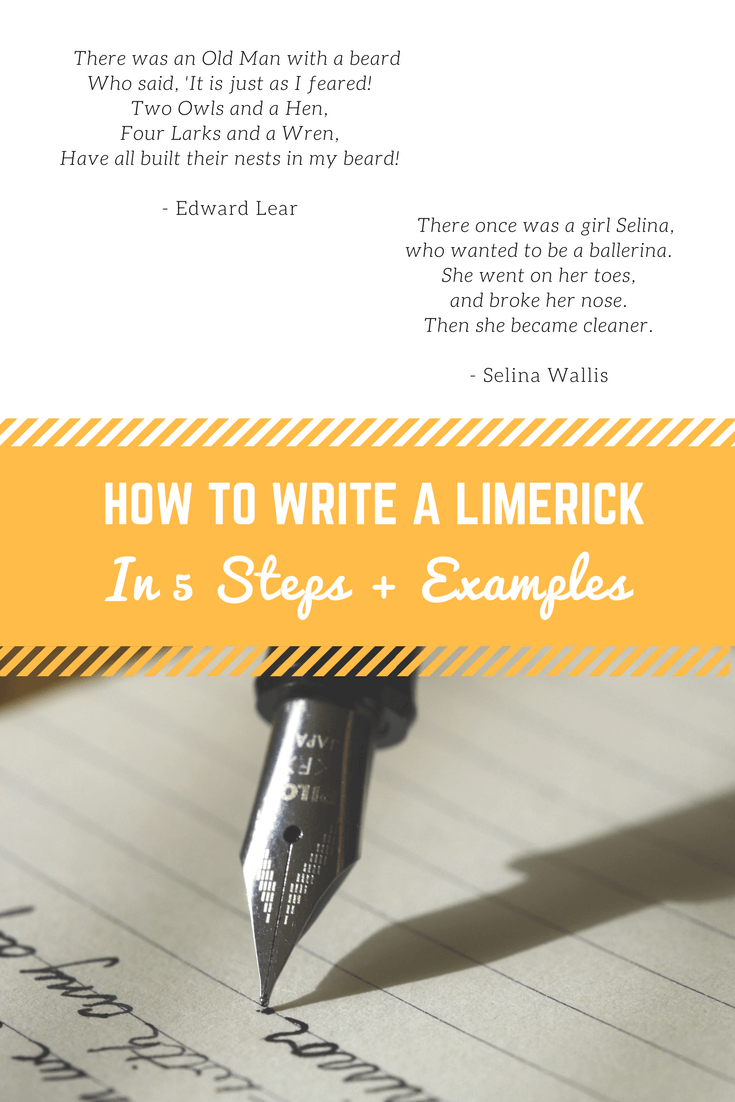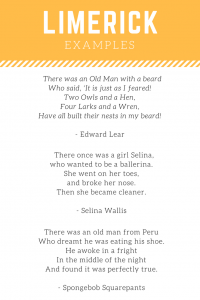Best Info About How To Write Limericks

A limerick is a humorous poem consisting of five lines.
How to write limericks. By definition, a limerick is a funny piece of poetry that consists of exactly five lines. The extra syllable at either end of the line is called an “ask” and. What was the result and the outcome.
Limericks use what is called an anapestic trimeter. Line one, two and five should rhyme with each other. The meter of a limerick is anapestic (three stressed syllables on the first line, two on the second line, and one on the third line).
Limerick serves as a short form of a story. Lines one, two and five must have seven to ten syllables while having the same verbal rhythm and also the last. A fuller description is here.
Basically, the meter is the number of beats. Your 1st, 2nd, and 5th lines, which are three feet, should have three sets of. Writing a limerick standard limericks are written in a stanza format of five lines, with certain lines rhyming with others.
You may punctuate the limerick, or you can leave. Choose the funniest one to finish your poem. In fact, breaking the rules of grammar can make.
In this short video we look at the structure and rhyming pattern of limericks. The second line should bring humour in. These are sometimes called “stressed” syllables.


















